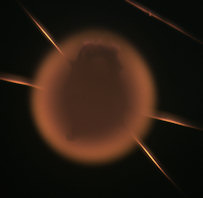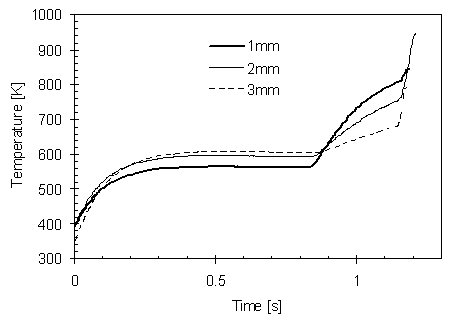|
|
|
| Study on Vaporization, Spontaneous Ignition and Combustion of Fuel Sprays |
|
Liquid fuels such as kerosene and light oil are utilized in many combustors in a form of spray combustion. Spray combustion is very complex because its process contains vaporization besides fuel/oxidizer mixing and chemical reactions. In this research, vaporization, spontaneous ignition and combustion of each droplet are experimentally and numerically studied as the simplified model of a spray. The numerical model is further developed to predict vaporization rate, ignition timing and heat release rate history of sprays of commercial fuels under high pressure relevant to commercial combustors.
|

Flame around an fuel droplet suspended on SiC fibers, which sponataneously ignited in high-temperature air
(pressure: 1.0 MPa, fuel: n-decane, droplet diameter: 1 mm, air temperature: 595 K, in microgravity.)
|

Temperature histories near a spontaneously igniting fuel droplet in high-temperature air (measured by K-type thermocouples)
(pressure: 0.3 MPa, fuel: n-decane, droplet diameter: 1 mm, air temperature: 620 K, in microgravity.
Cool flame was deteted before hot-flame appearance.)
|
|
|
|
|
|